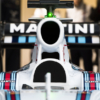6 unusual uses of 3D printing
The world of technology is constantly evolving. Although this is usually for the better, it is, occasionally, for the odder. Since the creation of 3D printing, there have been some unorthodox innovations created by the industry that some may find surprising. Here are just some examples:
- You’ve heard of the bionic woman, now get ready for…bionic skin? Engineering researchers at the University of Minnesota have created sensory electronic devices that are implemented onto fingers in order for surgeons to ‘feel’ during minimally invasive surgeries, as opposed to simply using cameras as they do now. Professor Michael McAlpine, of the university, said that, ‘While we haven’t printed on human skin yet, we were able to print on the curved surface of a model hand using our technique. We also interfaced a printed device with the skin and were surprised that the device was so sensitive that it could detect your pulse in real time.’
- In India, a woman’s life was saved via the ability to 3D print her spine. The unnamed woman’s health quickly deteriorated after a disease threatened to take her life: however, with the creation and implementation of a new vertebrae, she is ‘recovering quickly’ from her ailment, and can soon go back to her job as a teacher.
- The process of violin making has been ‘largely unchanged for centuries’: until now. A fully playable violin, realistic in appearance, has been engineered for 3d printing by Harris Matzaridis of the University of Sheffield. According to 3dprint.com, ‘Stringed instruments seem to be a popular choice for musically inclined makers, and we’ve seen many incredible 3D printed guitars and violins.’ The violin was constructed in more than 40 parts, and took about nine months to complete.
- In Dubai, the home of boundary-pushing architecture, there are plans to build the world’s first 3D printed skyscraper. It has already produced the world’s first 3D printed skyscraper, and now the company Cazza Construction Technologies– co-founded by 19-year-old Chris Kelsey – says it has plans to unveil the building on the Emirates skyline. Kelsey claims his printers can produce a 2,000 sq ft home in a single day.
- Meanwhile, in the Netherlands, a group of scientists have used 3D printing to create eye structures called ‘conformers’ to allow blind children’s faces to grow naturally. Although the artificial eye doesn’t create sight, it does let the child’s growing face have a ‘natural, proportioned’ look. The diseases microphthalmia and anophthalmia affect as many as 30 in 100,000 children worldwide, and the breakthrough in 3D printing would cause these children to have a better quality of life.
- Lastly, palaeontology is facing innovation in the form of 3D printing dinosaur bones in order to complete incomplete skeletons. Drexel University announced that it would team up with its Engineering department to do full scans of the skeletons, then use a 3D printer to ‘create 1/10 scale models of the most important bones.’ For a profession solidly stuck in the past, palaeontology and archology now has futuristic technology to uncover even more from beneath the earth’s surface.
All (crazy) things considered, who knows what the following twenty, ten, even five years will look like for the future of 3D printing, an industry that has proven its astonishing capability. There is a reason it is called ‘addictive manufacturing’ – if things go on as they are, there are definitely more exciting and unusual innovations just around the corner.


